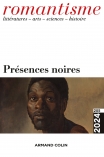
Romantisme n° 154 (4/2011)
Pour acheter ce numéro, contactez-nous
Recevez les numéros de l'année en cours et accédez à l'intégralité des articles en ligne.
A topos in living systems theories, the association of the vital principle with the process of nutrition seems to establish, in the 19th century, the supremacy of an organ which had the advantage of reconciling the ancient discourse of the alchemists with the perspective of physiology inherited from the Enlightenment. By popularising the image of the “triumvirate, tripod of life”, composed of the brain, the heart and the stomach, Théophile de Bordeu has indeed played a major part in the elaboration of a configuration both anatomical and ideological, in which the “second brain, placed in the diaphragm” ( Le Cousin Pons) appears a primus inter pares organ, in the image of a bourgeoisie that also defines itself as median and central. Sustained by a gastronomy viewed as an art of living in society, the new oeconomia animale stemming from physiology thus closely links the representations of Life to the representations of society, and outlines an organicist theory with an interdisciplinary and paradigmatic function. By asserting the very central position of the stomach a norm is established as well as a deviation, both of which literature is an echo, alternately critical and ironical.

